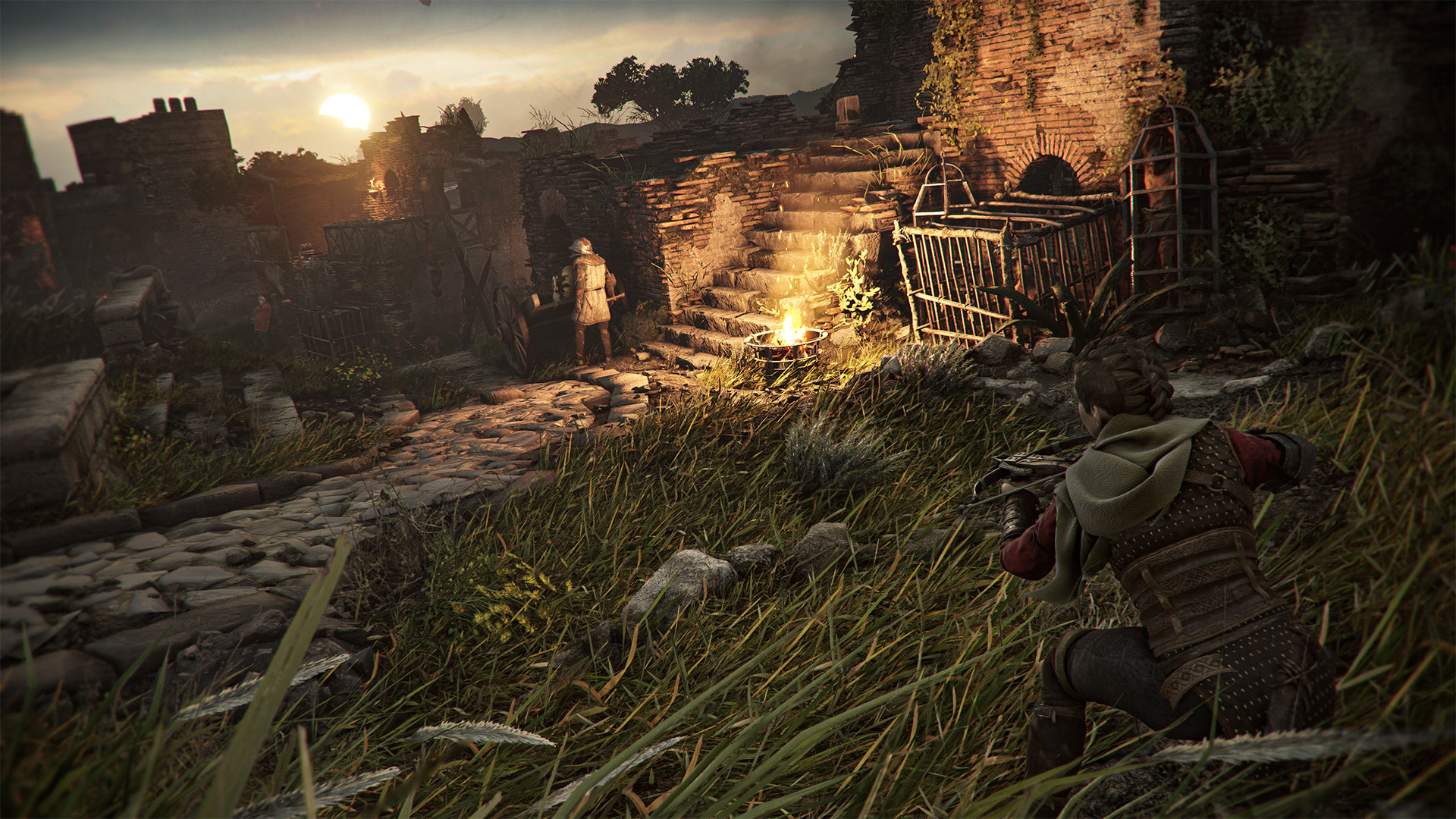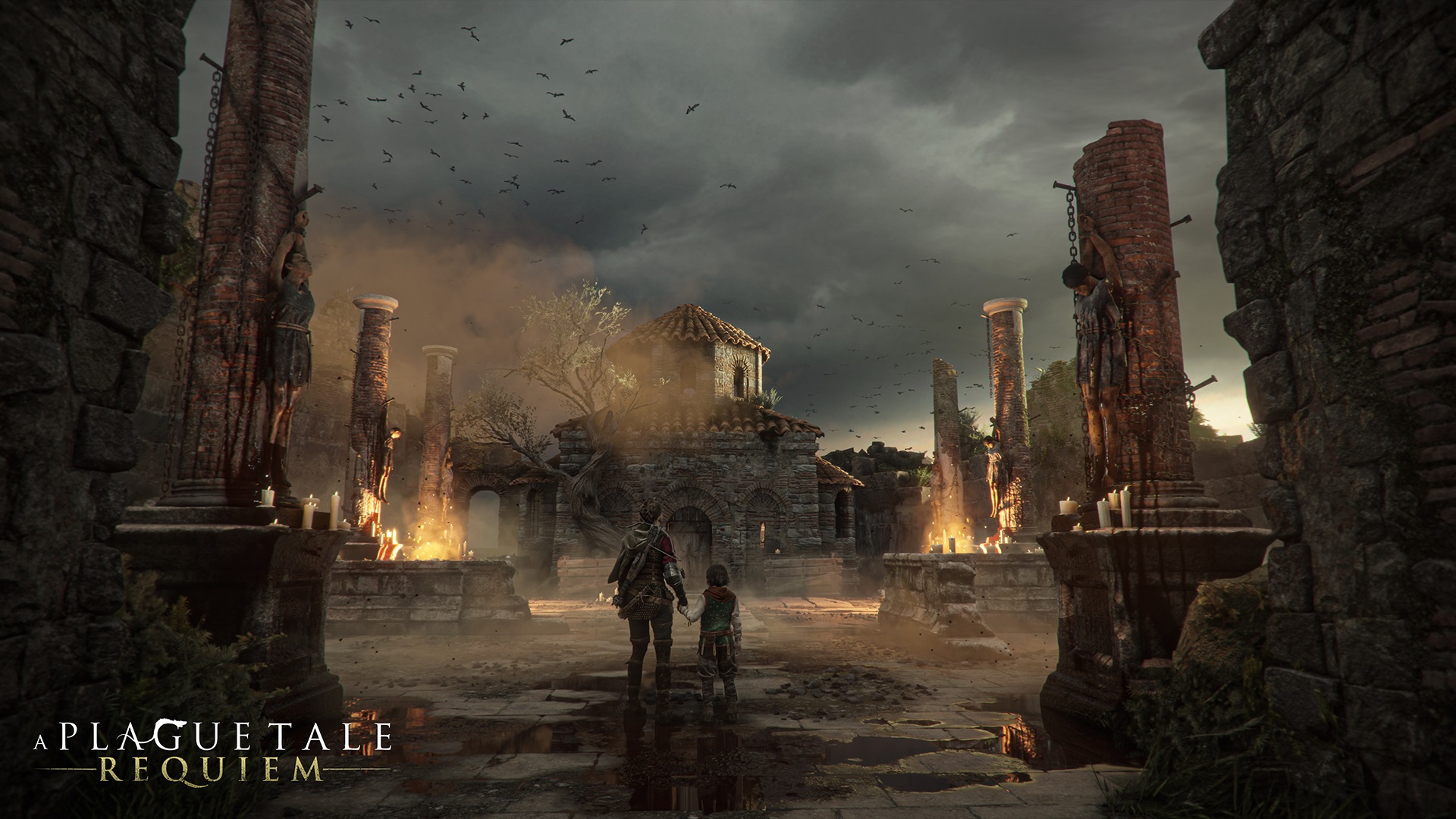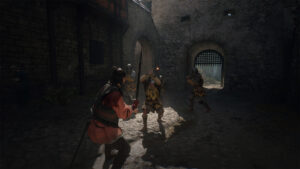
2019’s A Plague Tale: Innocence is one of the best single player story-driven games I have played in recent years. In spite of its modest budget and small development team, it delivered an experience that may not have rewritten the rulebook with any of its ideas, but excelled in the execution of nearly all of them, backing it all up with gorgeous visuals, production value, and a level of polish that you would only expect to see from the biggest AAA games. Given all that, it goes without saying that expectations from its sequel, A Plague Tale: Requiem, are much higher than they were for the 2019 game- but Asobo Studio’s latest effort surpasses all expectations, improving and expanding upon its predecessor in nearly every way possible, and giving yet another significant boost to the independent French studio.
Having dealt with the threat of the Inquisition and with Hugo’s sickness seemingly under control, A Plague Tale: Requiem’s beginning finds protagonists Amicia and Hugo, their mother Beatrice, and their friend Lucas enjoying some well-earned peace. Together, the group is headed to Provence, where they plan to met with the order of alchemists to try and study the Macula in Hugo’s blood, and maybe even find a proper cure for it. It turns out, however, that their troubles are far from over. Hugo’s powers quickly reawaken, and the rats come back in larger swarms than ever, while yet another army chases after Amicia and Hugo with terrifying relentlessness. Believing an island in Hugo’s visions to be the key to their problems, the brother and sister are forced to set out once again on yet another harrowing journey, hoping to find the island and cure Hugo’s blood disease once and for all.
"A Plague Tale: Innocence’s story was easily one of its biggest assets, and that continues to be the case in its sequel."
A Plague Tale: Innocence’s story was easily one of its biggest assets, and that continues to be the case in its sequel. The game has a strong and much larger cast of characters, and while Amicia and Hugo are, of course, the strongest of the bunch, Requiem has plenty of well-developed personalities in its supporting cast, including both new and familiar faces. The changing dynamics between these characters and the personal struggles they go through are the heart and soul of the narrative, while the personal arcs of both Amicia and Hugo once again take the spotlight. Of course, on a more macro scale, A Plague Tale: Requiem’s story continues to ramp things up where the rats and the mysteries of the terrifying plague are concerned, and that, too, continues to be a highlight for the story.
The story does occasionally falter in its execution. Like its predecessor, it’s clear to see how heavily A Plague Tale: Requiem models its storytelling style on The Last of Us, but though it certainly gets the tone and feel right, the writing itself can be a bit uneven. The biggest problem here is a total lack of subtlety, with the game choosing to hammer home certain plot points with overwrought dialogue and clumsy exposition. Stories that show and don’t tell are always the most effective- A Plague Tale: Requiem tries to do both, and comes up short in the process. It’s a shame, too, because a lot of conceptually captivating plotlines – like Amicia’s growing ruthlessness and brutality – end up being let down by those inconsistencies in the writing’s quality.
Still, the game deserves more credit for its story than it does criticism- far more, in fact. The tale told here is much larger in scale than its predecessor’s, from a larger cast of characters to a few notable unexpected narrative developments, and the fact that it managed to keep my attention until the very end says a lot about the story. Depending on how you play and how heavily you engage with the optional content on offer, A Plague Tale: Requiem can be roughly twice as long as Innocence (which was a tight, 10-hour game)- that it’s a blast to play through throughout that runtime is, of course, a credit to its pacing.
"Elegantly straightforward is the best way to describe it- because though the gameplay’s composite elements aren’t by any means extraordinarily new or special by themselves, together, they turn out to be deceptively complex and surprisingly varied."
Meanwhile, you can expect expansions on a similar scale on the gameplay front as well. Asobo Studio has made a number of smart changes and improvements in a number of areas, and put together, they improve the stealth and combat in meaningful ways. Stealth is still at the core of the experience, and dealing with human foes and trying to get past massive rat swarms are the its two pillars, with the latter revolving around manipulating light and shadow to make sure the rats can’t get to you, and the former being comprising of traditional stealth mechanics. Of course, there’s no shortage of sequences where you have to deal with both soldiers and rat swarms at the same time.
An expanded toolset and Amicia being able to do much more is one of the main drivers of A Plague Tale: Requiem’s much more meaty gameplay framework. In addition to Amicia’s sling and an array of familiar alchemical elements crafting using scavenged resources, new tools are also made available. Tar, for instance, is a new element that can be combined with fire to create light sources or light enemies on fire, while unlit tar thrown on the ground can also be used to slow down soldiers who might be pursuing you. Then there’s the crossbow, which greatly increases Amicia’s lethal capabilities and also comes in incredibly handy for the more stealthy players- though ammo is scarce, and knowing when to use your bolts and when to save them can eventually mean life and death. During stealth, you can also sneak up on enemies and stealthily kill them using knives- though again, knives are a rare commodity, so you have to think hard about how to use them, simply because there’s so many other things they can be used for, from countering enemies that are too close to you to unlocking special workbenches that are usually hiding a treasure trove of crafting and upgrade materials.
A few hours into the game, Hugo also gets the ability to control rat swarms and drive them right into unsuspecting enemies to chew them down to the bone within seconds. A Plague Tale: Requiem puts limits on that ability in interesting ways, so not only does it feel very well balanced and not at all overpowered on a gameplay level, it’s also contextualized within the story really well. Meanwhile, the AI has seen noticeable gameplay improvements as well, which means enemies are now much smarter, and also much more relentless in their efforts to find you if they spot you. Speaking of which, A Plague Tale: Requiem also makes Amicia much more durable, so rather than dying in a single hit, she can now take an attack, flee, and try to re-enter stealth. It’s an improvement that benefits both stealth and combat – as well as the interplay between them – greatly.
"There are several jaw-dropping moments in the game where you’re faced with a frankly stupid number of rats that are best left unspoiled, while even during regular gameplay sequences, the vicious critters feel like a much more formidable threat. To absolutely no one’s surprise, the rats are the best thing about A Plague Tale: Requiem."
The vast majority of A Plague Tale: Requiem’s gameplay mechanics are straightforward and familiar, but the game constantly keeps coming up with scenarios and gameplay sequences that are designed to encourage players to play around with that toolset in new and interesting ways. Elegantly straightforward is the best way to describe it- because though the gameplay’s composite elements aren’t by any means extraordinarily new or special by themselves, together, they turn out to be deceptively complex and surprisingly varied. This was very much true of A Plague Tale: Innocence as well, and its sequel doubles down on that success.
Given how good the game is when it’s focusing on stealth and puzzles, it’s a little baffling to see it force you into forced combat sequences every so often. With surprising frequency, gameplay sequences put you in a tight, cramped space where you have to deal with either a single enemy or multiple waves of them, and without fail, these sequences failed to land for me. This is a game built around stealth, so it’s no surprise that sections that force you into frantic combat come across as clunky and frustrating. In the grand scheme of thing, they make up a small fraction of the total runtime, but they are annoying enough that they deserve to be called out.
Of course, not all forced sequences fail to hit the mark. A Plague Tale: Requiem has a number of excellent scripted set piece sequences, from intense chases to massive, large-scale scenes that highlight the terrifying scale and destructive power of the rat swarms. That last bit in particular deserves special praise- rats were obviously the star of the show in A Plague Tale: Innocence, but they’re notched up to an almost ridiculous degree in Requiem. There are several jaw-dropping moments in the game where you’re faced with a frankly stupid number of rats that are best left unspoiled, while even during regular gameplay sequences, the vicious critters feel like a much more formidable threat. To absolutely no one’s surprise, the rats are the best thing about A Plague Tale: Requiem.
"It’s shocking that this has been made on a budget and by a development team that are astronomically smaller compared to what you would expect from AAA titles- because this very much feels like a AAA title."
It helps that the game looks absolutely incredible. Once again, it’s shocking that this has been made on a budget and by a development team that are astronomically smaller compared to what you would expect from AAA titles- because this very much feels like a AAA title. It looks stunning, it boasts a ridiculous level of attention to detail, its impressive visual fidelity is matched by gorgeous art design, and there are barely any performance issues to speak of. My hat is off once again to Asobo Studio for punching way above its weight.
A Plague Tale: Requiem is an absolute gem of a game. It’s not flawless, but it outdoes its predecessor in just about every way possible. Most of the improvements it makes might seem small and very iterative in isolation, but all of those smart changes come together to deliver a gameplay experience that feels significantly meatier and, as a result, much more enjoyable- and of course, the story, in spite of some writing inconsistencies, continues to shine. If A Plague Tale: Innocence laid down a solid foundation, Requiem builds a sleek and impressive tower on top of it. It’s one of the best games of the year.
This game was reviewed on the PlayStation 5.
Endearing cast of characters; Captivating story from beginning to end; A much longer and meatier experience; Very well paced; Makes plenty of smart improvements to both stealth and combat; Straightforward mechanics come together a surprisingly complex and varied gameplay experience; The rats are absolutely bonkers; Looks absolutely gorgeous.
Writing is often clumsy; Forced combat sequences feel frustratingly clunky.




















